The summer months can be a lonely time in many towns. Just over twenty-one million people are enrolled, either part time or full time, at colleges and universities across the country, just over 6% of the population. Many large universities are in small towns, where the exodus of students after final exam week has a major impact on the retail and food service sectors of the town.
For large towns of 50,000 or more, the top 10 based on population enrolled at the college level are:

The Census Bureau even designates some college campuses as “Census Designated Places” as they are outside of incorporated areas, and in these cases, the percentages are over 80% (Rutgers University, Cal Poly, SUNY Buffalo).
We often suggest that retailers and restauranteurs look beyond the total population count to understand markets they may wish to enter. The group quarters population in college dormitories is important, but often overlooks substantial numbers of full-time students who live off campus.
We mapped the percentage of the population enrolled (both full and part time) at the college level for several areas at the census block level to show that even in large cities, the college population can have a significant impact well beyond the campus boundaries. In general, the smaller the town, the greater the dispersion of students within the town – consider the very tight pattern around the University of Southern California in Los Angeles compared to the pattern in State College, Pennsylvania:
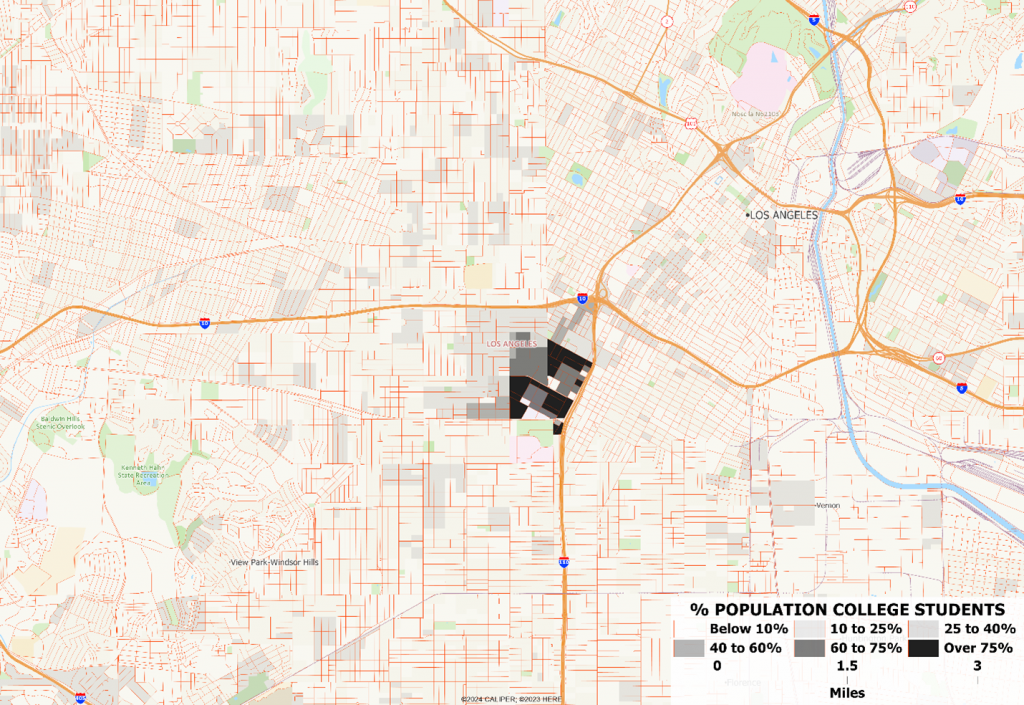
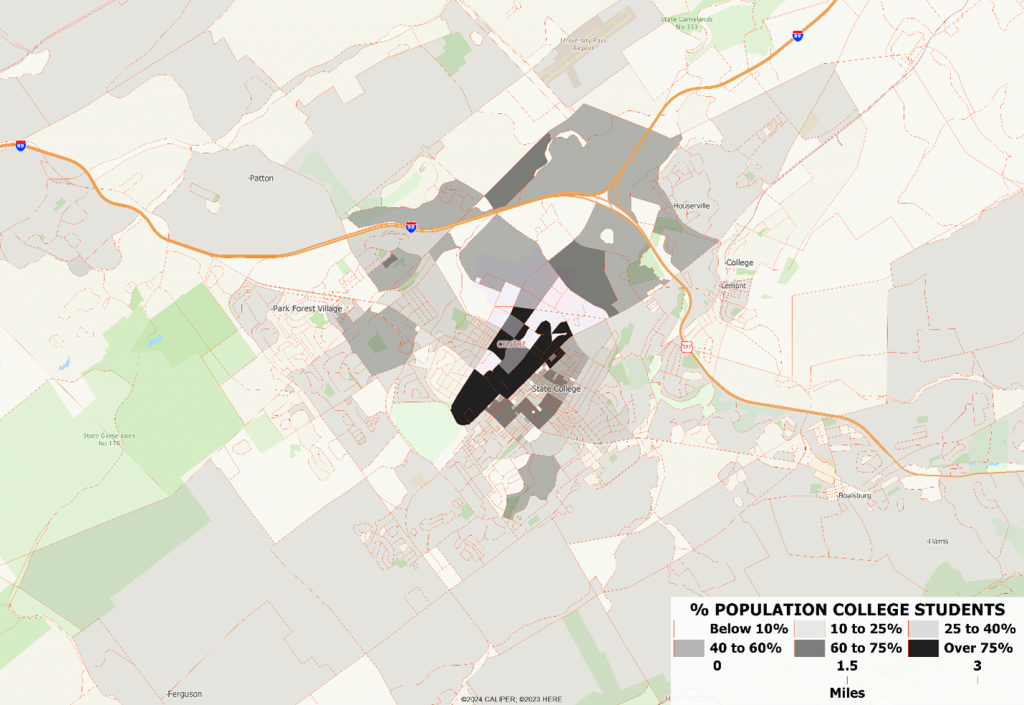
In general, a pattern holds that large urban universities tend to have concentrated student populations, whilst smaller ‘college towns’ – those clearly associated with a university – tend to have their students more widely dispersed. Below are the University of Massachusetts (Amherst), the University of Texas (Austin), and the Florida State University (Gainesville).
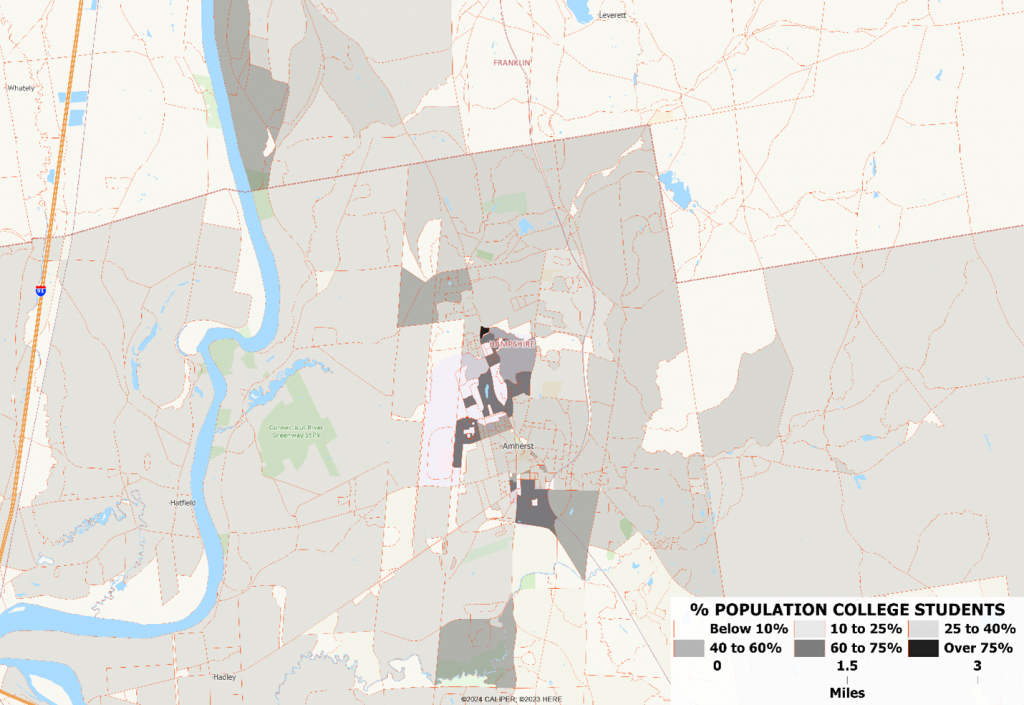
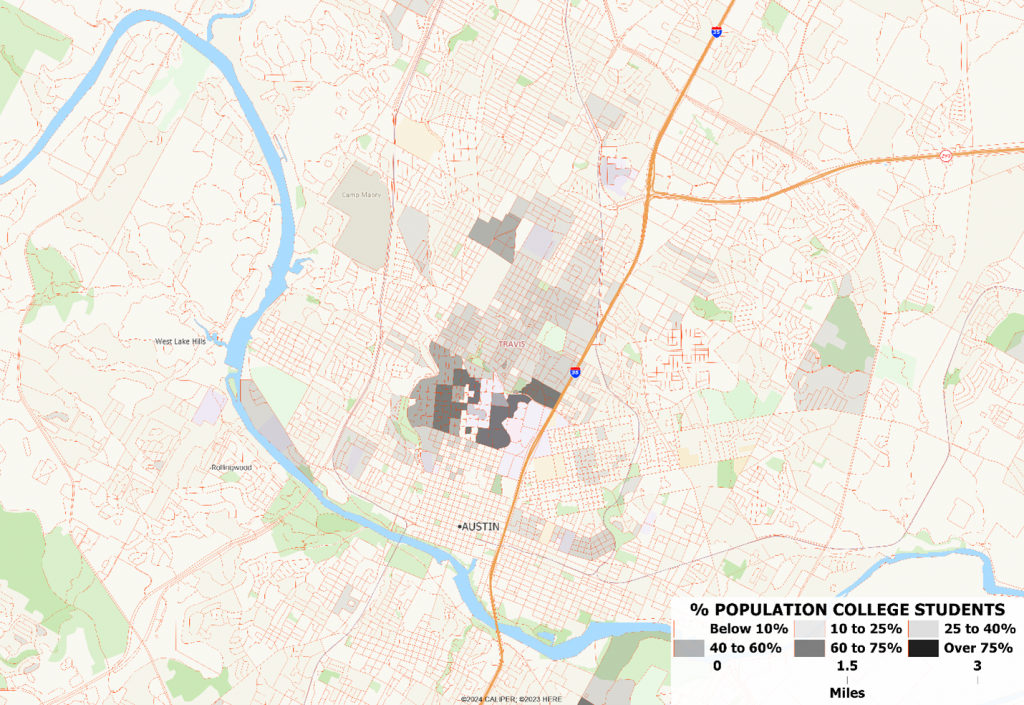
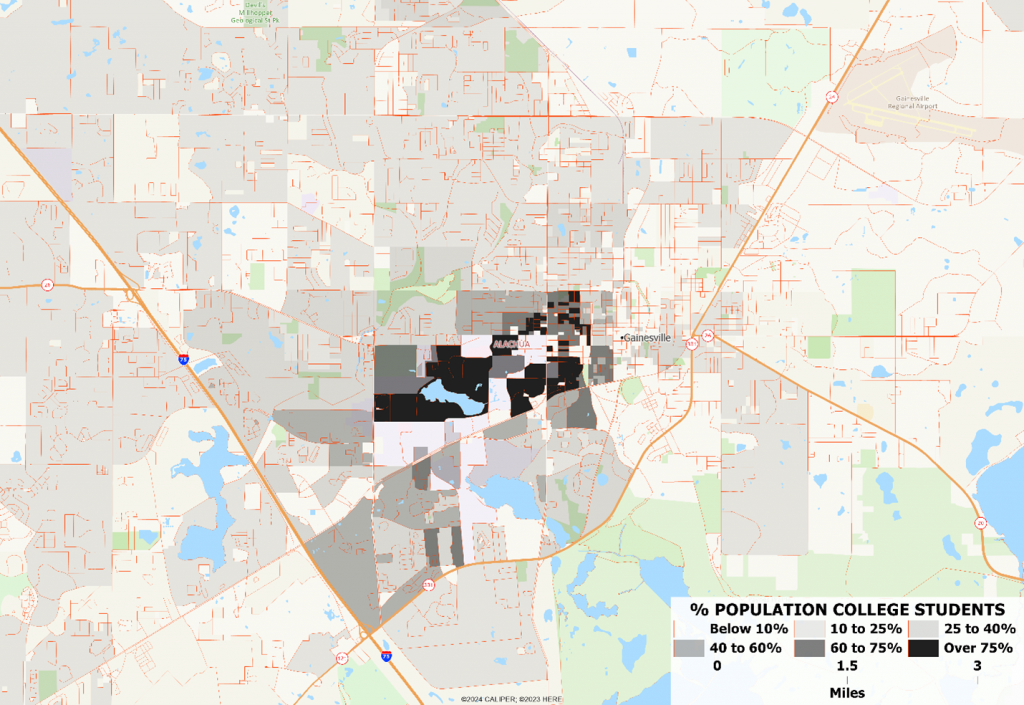
Site analysts will often know that Auburn, Alabama is city wide a college town and adjust their models or expectations accordingly. In large urban areas, it is essential to know where the campuses are located, and to understand how broadly or narrowly the students are clustered around the campus. Indeed, for those businesses that cater to college students, knowing exactly where they live is more important than knowing the total population.
